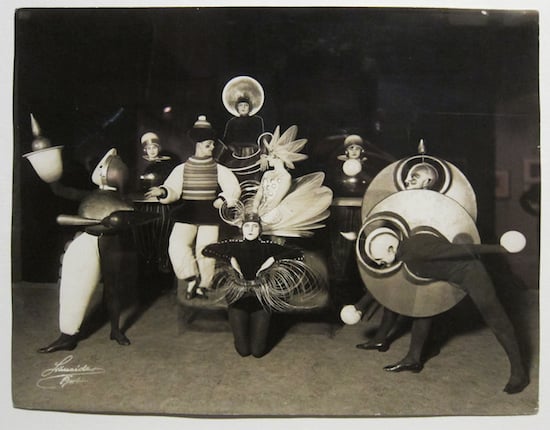Oskar Schlemmer
By:
September 4, 2014

Bauhaus history tends to prioritize architecture, but OSKAR SCHLEMMER (1888–1943), along with his Bauhaus colleague László Moholy-Nagy, theorized a total theater that would spiritualize the age of mechanical reproduction by mechanizing its space of refuge: the theater. Schlemmer envisioned theater as an instrument of response to the alienation of industrial life; socialist ideals and the processes of capital production were knit together in his utopian vision of connection between the reproduced form and the human body through the interrelationship of form, space, plane, color, volume, dimension, direction — nonfigurative sculptural concerns understood as experiential intensities that could be inflected in time in the room of theater. Which brings us to dance: Following Schlemmer’s interest in the geometries of human form, we can give attention to the conical rotations of certain joints, hinges of others, or to the three bowls we float around the spinal axis — pelvis, ribs, skull — that bony tea tray we transport through the day. Schlemmer built onto the body to make overtly perceptible a utopian aspiration of relating the human body, through simple elments of line and curve, to every other thing in space. Read his superimpositions as intensifiers of the experience of mobility.

On his or her birthday, HiLobrow irregularly pays tribute to one of our high-, low-, no-, or hilobrow heroes. Also born this date: Antonin Artaud.
READ MORE about members of the Modernist Generation (1884–93).
